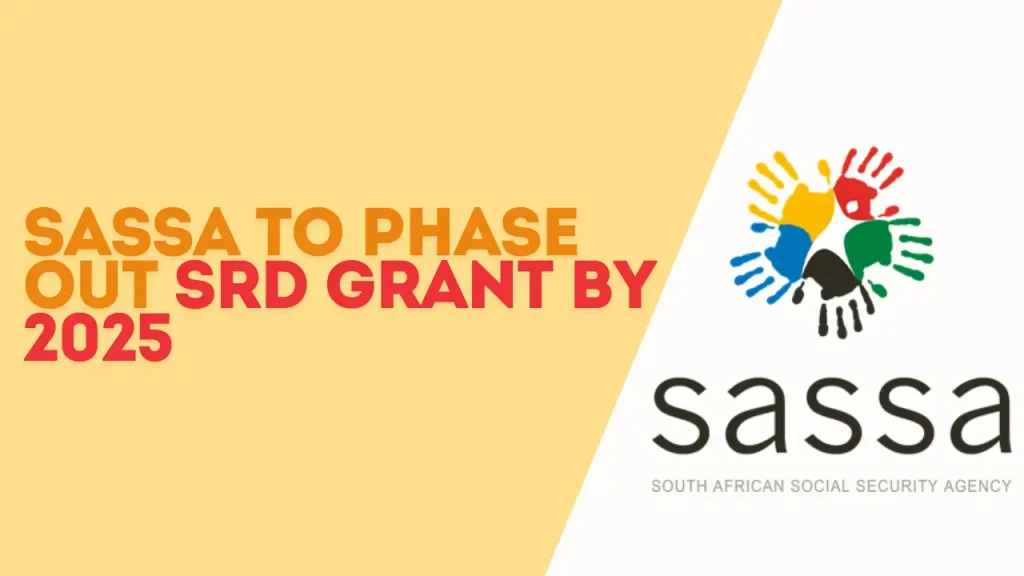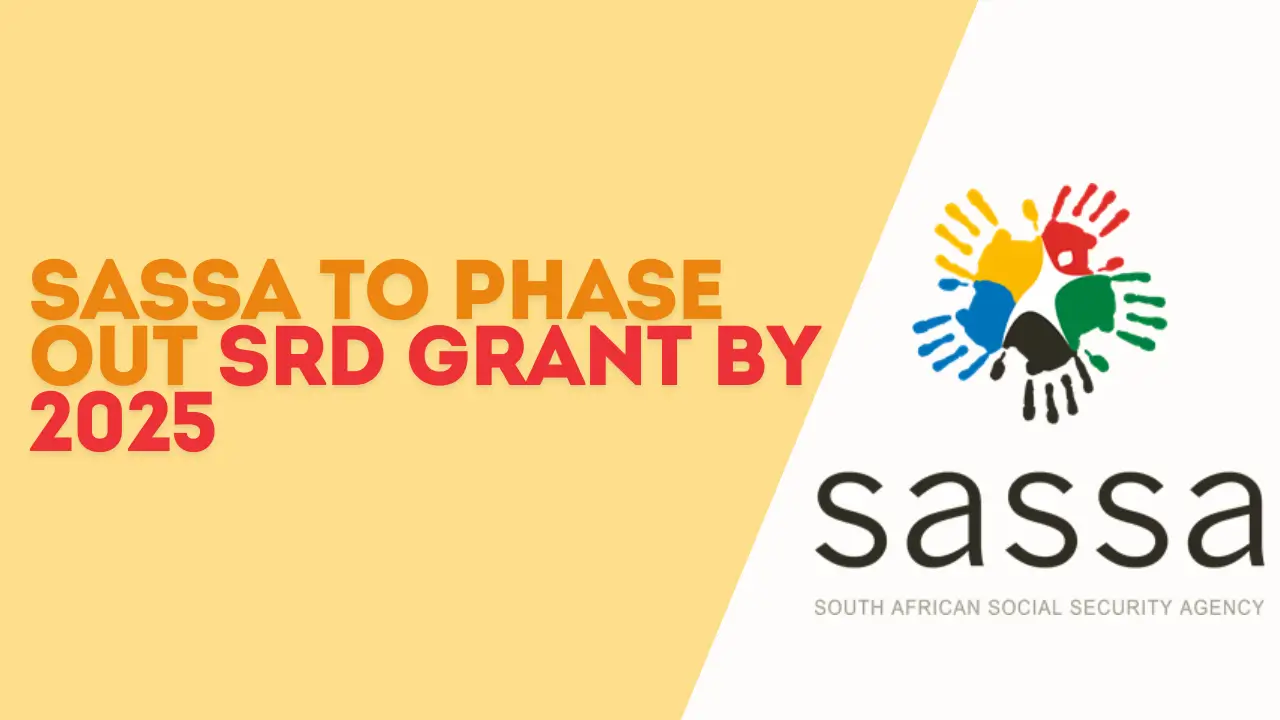The South African Social Security Agency (SASSA) Social Relief of Distress (SRD) grant has been a crucial lifeline for millions of South Africans since its introduction in May 2020. As we approach 2025, there are ongoing discussions and developments regarding the future of this grant. Let’s explore the current situation and what we know so far about the potential ending of the SRD grant in 2025.
Background of the SRD Grant

The SRD grant was initially introduced as a temporary measure to provide financial support to vulnerable South Africans during the COVID-19 pandemic. Set at R350 per month, the grant aimed to assist those who were unemployed and had no other means of incom1. Since its inception, the grant has undergone several extensions and has become a significant part of South Africa’s social welfare system.
Current Status and Extension Of the SRD Grant
In a recent development, Finance Minister Enoch Godongwana announced in the Medium-Term Budget Policy Statement 2023/2024 that the SRD grant has been extended until March 2025. This extension comes with a substantial allocation of R34 billion, demonstrating the government’s commitment to sustaining this vital social relief initiative.
The extension of the SRD grant until 2025 reflects the government’s recognition of persistent economic challenges and the ongoing need for support among vulnerable populations. It also provides a window for policymakers to consider long-term solutions and potential reforms to the social security system.
Beneficiaries and Impact Of the SRD Grant
The SRD grant currently provides crucial support to approximately 8.5 million recipients nationwide. This extensive reach underscores the grant’s significance in alleviating poverty and providing a safety net for those without alternative income sources.
A documentary titled “A Decent Path” has been produced to showcase the transformative impact of the R350 grant on beneficiaries’ lives. The film highlights how this modest amount has brought immediate relief to millions of unemployed adults and helped keep local economies afloat during challenging times.
SRD Grant Challenges and Criticisms
- Value Erosion: The value of the SRD grant has remained unchanged at R350 since its introduction in 2020. By 2024, it is estimated that the grant’s real value will have dropped by 20% due to inflation, significantly reducing its purchasing power.
- Application and Approval Process: The introduction of new regulations and restrictions has led to a complex and sometimes exclusionary application process. This has resulted in a significant drop in the number of approved applications, from 10.9 million in March 2022 to 7.5 million in January 2023.
- Payment Issues: Even among approved applicants, there have been instances where beneficiaries have not received their payments. SASSA reported that around 1.3 million approved applicants per month were not paid over a three-month period.
- Budgetary Constraints: The National Treasury has faced challenges in allocating sufficient funds for the grant, leading to concerns about its sustainability and potential for expansion.
SRD Grant Future Prospects and Potential Changes
1. Transition to a Universal Basic Income Grant (UBIG)
There are ongoing discussions about potentially replacing the SRD grant with a Universal Basic Income Grant (UBIG). While no official announcement has been made, this transition could represent a more comprehensive and permanent solution to address poverty and inequality in South Africa.
A UBIG would provide a regular, unconditional cash transfer to all citizens or residents, regardless of their employment status or income level. This approach could potentially simplify the administration of social grants and ensure broader coverage.
2. Comprehensive Review of the Social Grant System
The government has indicated that a comprehensive review of the entire social grant system is underway. This review, conducted by the Department of Social Development and the National Treasury, aims to assess the effectiveness of current programs and explore potential reforms.
The outcomes of this review could significantly influence the future of the SRD grant and the broader social security framework in South Africa.
3. Potential Increase in Grant Amount
While the SRD grant amount has remained at R350 since its inception, there have been discussions about potentially increasing this amount. Some reports suggest that the grant could increase to R370, although this has not been officially confirmed.
An increase in the grant amount would help offset the effects of inflation and provide more substantial support to beneficiaries. However, such an increase would also require careful consideration of budgetary implications and long-term sustainability.
4. Integration with Other Social Programs
There is a possibility that the SRD grant could be integrated or aligned with other existing social programs to create a more cohesive and efficient social security system. This could involve streamlining application processes, improving data sharing between different agencies, and ensuring better targeting of beneficiaries.
Challenges in Transitioning Away from the SRD Grant
- Economic Impact: The SRD grant has become a significant contributor to local economies, especially in low-income areas. Abruptly ending the grant could have negative ripple effects on these communities.
- Political Considerations: The grant has gained widespread support among beneficiaries and advocacy groups. Any decision to end or significantly alter the program could face political resistance.
- Administrative Hurdles: Transitioning to a new system, such as a UBIG, would require substantial administrative changes, including new application processes, payment systems, and eligibility criteria.
- Fiscal Constraints: South Africa’s current economic situation and budgetary pressures may limit the government’s ability to implement more expansive and costly social security programs.
Preparing for Potential Changes Of the SRD Grant
- Stay Updated: Regularly check official SASSA channels and reputable news sources for updates on the SRD grant and potential changes to social assistance programs.
- Explore Alternatives: Beneficiaries should explore other forms of social assistance or employment opportunities that may be available to them.
- Participate in Public Discourse: Engage in public discussions and consultations about the future of social assistance in South Africa. This can help ensure that the voices of beneficiaries are heard in policy-making processes.
- Financial Planning: Where possible, beneficiaries should consider developing financial plans that account for potential changes to the grant program.
Conclusion
As we look towards 2025, the future of the SASSA SRD grant remains a topic of ongoing discussion and policy consideration. While the grant has been extended until March 2025, its long-term fate is still uncertain. The government faces the challenge of balancing the immediate needs of vulnerable populations with long-term fiscal sustainability and broader social security reforms.
The potential ending of the SRD grant in 2025 could mark a significant shift in South Africa’s approach to social assistance. Whether it transitions into a more comprehensive program like a Universal Basic Income Grant or undergoes substantial reforms, the changes will have far-reaching implications for millions of South Africans.
As the situation continues to evolve, it is crucial for all stakeholders – beneficiaries, policymakers, and the public – to engage in constructive dialogue about the future of social assistance in South Africa. The decisions made in the coming years will play a crucial role in shaping the country’s efforts to address poverty, inequality, and economic challenges in the post-pandemic era.

